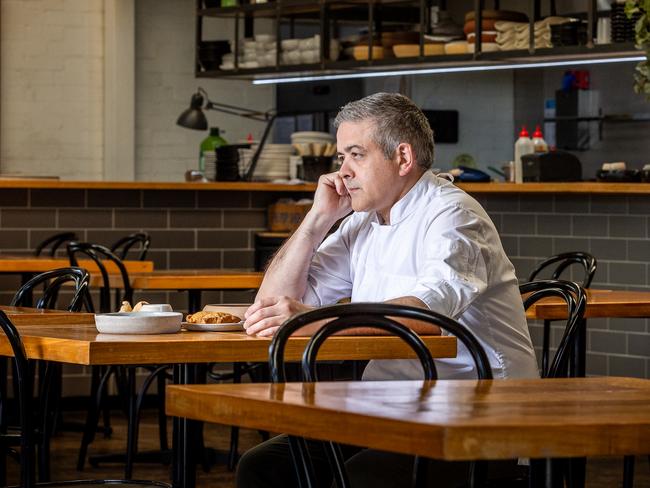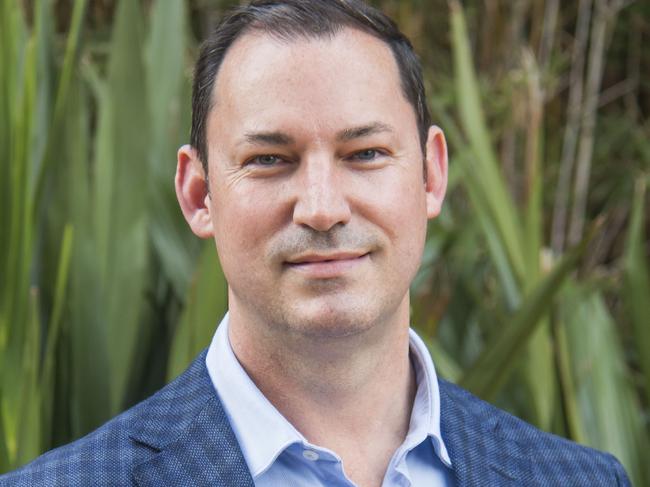Melbourne menu prices soar but restaurants struggling to turn a profit
Meal prices at some restaurants have tripled over the past five years, but chefs and owners say the industry is broken and they’re in dire need of help.

Food
Don't miss out on the headlines from Food. Followed categories will be added to My News.
Some meals at Melbourne restaurants cost three times more than they did five years ago.
A Herald Sun analysis of old cafe, restaurant and bar receipts, independently reviewed in Melbourne and regional Victoria between 2019 and 2024, found the price of some individual menu items had tripled within five years.
In one instance, Gembrook Argentinian restaurant The Independent hiked the price of its famed empanadas by almost 70 per cent – from $6.50 to $11 – and still says it isn’t making a profit.
Japanese restaurant Eazy Peazy in Richmond tripled the price of chicken yakitori, from $5.50 to $15 (up 172 per cent) and more recently, celebrity chef Scott Pickett’s Thai favourite Longrain slapped an extra $10 on its much-loved eggnet dish within 12 months.

The Independent chef and owner Mauro Callegari said he had no choice but to hike prices for some menu items, but added he still wasn’t making any money.
“Since last February the business hasn’t made profit,” he told the Herald Sun.
“Certain meats have gone up by a lot, but most (produce) didn’t. But what did go up in an outrageous way was insurance, water, wages … it just keeps going up.”
Callegari, who has run The Independent for a decade, said upping meal prices wouldn’t cover the exorbitant overheads of running a restaurant such as wages, taxes and insurance.
“We are paying double the cost of insurance pre-Covid,” he said.
“Last year we paid $700-$800 a month to have eftpos in our restaurant – now it’s $1189 per month.”
Celebrated chef Pickett, behind popular restaurants such as Estelle, Chancery Lane and Matilda, said Melbourne’s hospitality industry desperately needed help.
“The business model is broken, the whole industry needs a shake-up,” he told the Herald Sun. “I charge $45 for a steak, and I should make it $49.50 or $52 as a main course, but people won’t pay that. It costs me $60, or $66 including GST, to put it on a plate.”

The random receipt analysis of restaurant meals also found:
• 92 per cent increased between $10 and $6;
• 75 per cent increased by $5 or less;
• 13 per cent saw no increase in price;
• 8 per cent increased prices by $10 or more; and
• 7 per cent decreased in price.
Pickett said the reason he upped the price of his eggnet dish was a discrepancy in the seafood used and a larger portion size.

Eazy Peazy’s new owners also defended the price hike, saying the restaurant now sold two skewers instead of one per serving, which meant the price of the chicken tsunke meatball and chicken yakitori had only increased by 50c and $2 respectively.
Lucas Restaurants, which had surprisingly seen a reduction in the price of its raw tuna dish in two years, said it “managed to keep prices highly competitive across all venues”.
“Our team has also worked hard to find efficiencies across our venues, ensuring we maintain value without compromising on quality,” said general manager of brand Celia McCarthy.
The analysis is supported by new point-of-sale data compiled by Lightspeed, which shows the average spend per person had jumped from $39.47 to $52.74 in restaurants and from $14.51 to $18.06 in cafes between 2020 and the first quarter of 2024.
Australian Restaurants and Cafe Association chief Wes Lambert warned customers would need to adapt to inflated prices as the economy recovered.
“Once the economy begins to recover, restaurants and cafes around Australia may need to increase their prices to survive, as according to IBISWorld data, restaurant profits are averaging 4 per cent,” he said.
“And if diners want their favourite cafe to stay open, they may have to foot the bill.”



